Planning a Trip to Scotland: Insights from My Sponsored Trip
June 6, 2023
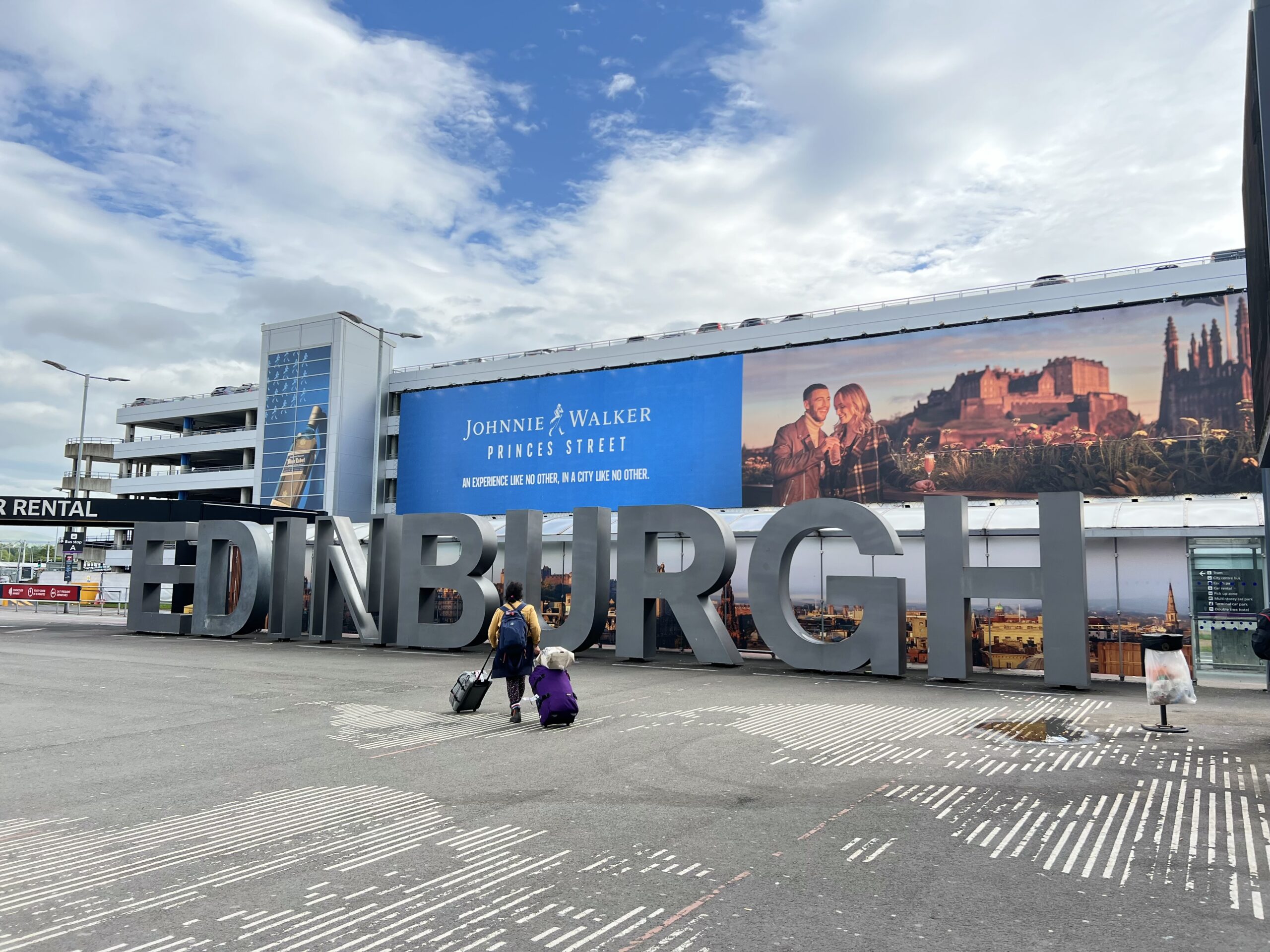
Scotland, a captivating country in the northern part of the United Kingdom, is renowned for its breathtaking landscapes and rich history. During my sponsored trip to Scotland with Detailed Journey, I had the incredible opportunity to explore this remarkable destination firsthand.
Upon arriving in Scotland, I was immediately captivated by its stunning landscapes and immersed in its vibrant history. From the rugged mountains to the ancient castles and lively cities, Scotland offers diverse experiences for travelers like myself.
As our itinerary unfolded, we ventured into the awe-inspiring highlands, where an overwhelming sense of awe and admiration greeted me. The towering peaks seemed to reach for the heavens, and the crisp air invigorated my spirit. Witnessing nature’s grandeur in such an untouched and majestic setting was a humbling experience.
Planning a trip to Scotland requires careful consideration of various factors, and I quickly realized how much research and preparation Detailed Journey took to make the trip successful. From managing costs to organizing transportation, a well-thought-out plan is essential to make the most of your time in this beautiful country.
From my insights, I will share my personal experience and insights from my sponsored trip to Scotland. I’ll delve into the various aspects of planning a trip, including cost considerations, transportation options, essential tips, notable accommodations, must-visit attractions, and more.

What We’ll Cover:
Disclaimer: Some of the links in the article below are affiliate links, and at no additional cost, I earn a commission if you make a purchase. All opinions on my sponsored trip with Detailed Journey are my own.
Planning a Trip to Scotland: Insights from My Sponsored Trip
What You Should Know About Scotland
Scotland is known for its fascinating history and strong sense of national identity. From ancient castles and battlefields to the legendary Loch Ness, countless historical sites and landmarks exist to explore. Be sure to visit iconic attractions like Edinburgh Castle, Stirling Castle, and the Culloden Battlefield to delve into Scotland’s rich heritage.
Scotland’s landscapes are renowned for their natural beauty. From the rugged peaks of the Highlands to the tranquil lochs and picturesque islands, the country’s scenery will leave you awestruck. Don’t miss the chance to explore places like the Isle of Skye, the Cairngorms National Park, and the North Coast 500 for breathtaking vistas and outdoor adventures.
Scotland has a rich tapestry of cultural traditions that are celebrated throughout the year. From bagpipe music and traditional ceilidh dances to tartan kilts and Highland games, immerse yourself in the vibrant Scottish culture and experience its unique customs.
Don’t miss my 10 Facts To Know Before Your First Travel to Scotland, either!
When To Visit Scotland?
When planning a trip to Scotland, consider the best time to visit to make the most of your experience. The weather and events throughout the year determine the ideal time to explore this beautiful country.
Summer (June to August) is considered the peak tourist season in Scotland. During this time, the days are long, and the weather is generally warmer, making it perfect for outdoor activities and sightseeing. The lush green landscapes are in full bloom, and you can enjoy hiking, camping, and exploring the stunning Scottish countryside. However, it’s important to note that summer is also the busiest time, and popular attractions can be crowded.
Scotland considers Spring (March to May) and autumn (September to October) shoulder seasons. These months offer milder temperatures and fewer crowds compared to summer. Spring brings blooming flowers and vibrant colors, while autumn showcases a stunning foliage display. These seasons are ideal for exploring cities like Edinburgh and Glasgow, visiting historic sites, and taking scenic drives through the countryside.
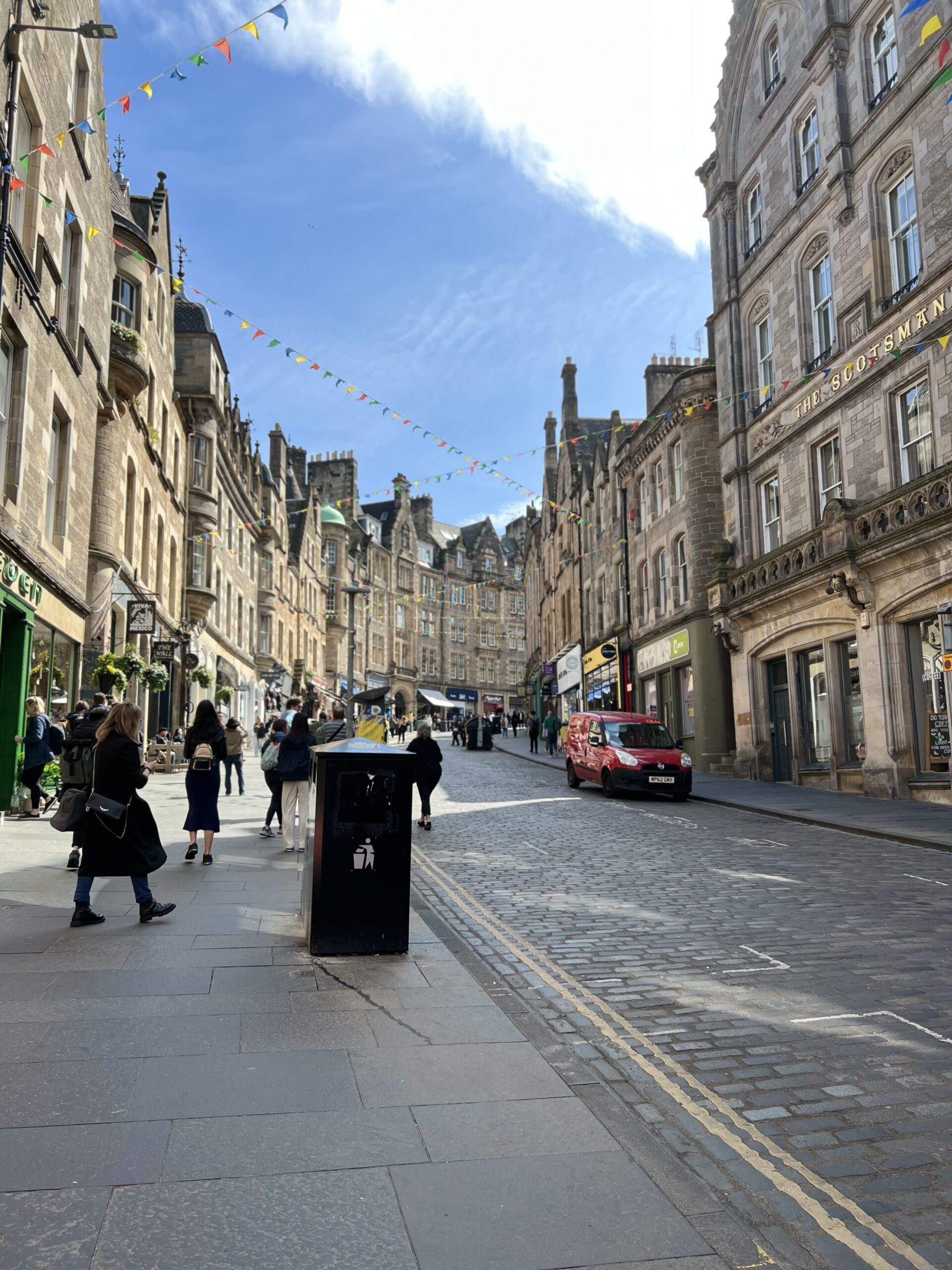
Traveling at the end of May gave me a unique and diverse weather experience in Scotland. I witnessed a collection of weather patterns throughout the day, from glorious sunshine illuminating the picturesque landscapes to brief rain showers that brought a refreshing ambiance. For the most part, the weather was overall pleasant—chill to cool/warm, but not warm.
The beauty of Scotland’s weather in May was its unpredictability. One moment, the sky would be adorned with fluffy clouds casting beautiful shadows over the rolling hills, and the next moment, the clouds would part, revealing a stunning blue expanse. The mild temperatures made exploring comfortable, and the refreshing breezes added a touch of invigoration to my outdoor adventures.
In Scotland, Winter (November to February) is cold and wet. If you enjoy winter sports like skiing or snowboarding, the Scottish Highlands offer excellent opportunities for these activities. Additionally, winter is a great time to experience Scotland’s festive spirit, with Christmas markets, Hogmanay celebrations, and traditional events throughout the country.
It’s worth noting that the weather in Scotland can be unpredictable regardless of the season. Rain is common throughout the year, so it’s advisable to pack waterproof clothing and be prepared for changing weather conditions.
Another factor to consider when planning your visit to Scotland is the presence of midges, small flying insects that can be bothersome, particularly in the summer months. If you’re sensitive to insect bites, you may want to take precautions or plan your visit during periods when midges are less active, such as early spring or late autumn.
Yet, the best time to visit Scotland depends on your preferences and the experience you seek. Whether you’re looking to enjoy outdoor adventures, delve into Scottish history, or immerse yourself in the local culture, Scotland has something to offer year-round. Consider the weather, events, and activities that interest you the most, and plan your visit accordingly to make the most of your time in this captivating country.
Check out: What to Pack for Scotland In May (Spring Packing List)
Is Scotland Budget-Friendly?
Scotland can be a surprisingly budget-friendly destination for travelers, offering a range of options to suit different budgets. While it may not be the cheapest destination in Europe, many ways exist to explore Scotland without breaking the bank.
Accommodation options in Scotland cater to various budgets. From budget hostels and guesthouses to affordable hotels and self-catering apartments, plenty of choices provide comfortable and reasonably priced accommodations. Additionally, Scotland offers a wide selection of campsites for those who enjoy outdoor adventures and prefer a more affordable option.
Transportation in Scotland can also be budget-friendly. The country has an extensive bus and train network connecting major cities and towns, offering affordable fares. Travel passes like the Scotland Explorer Pass, or the Highland Rover can provide further discounts and flexibility for exploring multiple destinations.
Regarding dining, Scotland offers a range of options to suit different budgets and tastes. While high-end restaurants can be expensive, there are plenty of affordable eateries, cafes, and pubs where you can enjoy traditional Scottish cuisine without overspending. Additionally, exploring local markets and trying out street food can be a cost-effective way to experience the local flavors.
Scotland’s top attractions, such as its stunning landscapes, historic castles, and beautiful hiking trails, are free or have affordable entry fees. Exploring the country’s natural beauty through hiking or enjoying scenic drives costs nothing or requires minimal expenses.
It’s important to note that, like any destination, Scotland also has its share of luxury offerings that can be quite expensive. Our trip itinerary included Afternoon Tea and dinner at a fancy hotel, but to me personally, I’ve seen higher prices, but the experience was still luxurious.
Quick Round-Up of Expenses In Scotland
Knowing the potential expenses you may encounter when planning a trip to Scotland is helpful. Here’s a quick round-up of common expenses in Scotland:
Accommodation
The cost of accommodation in Scotland varies depending on the location and type of lodging. Budget-friendly options like hostels and guesthouses can range from £15-£40 (€17-€45 / $20-$50) per night, while mid-range hotels may cost around £60-£120 (€68-€136 / $80-$160) per night. Luxury accommodations can be significantly higher.
Transportation
Scotland offers various transportation options. Public transportation, including buses and trains, can be relatively affordable. A single bus ticket within a city can range from £1.50-£3 (€2-€3.5 / $2.5-$4), while intercity train fares vary based on distance. Renting a car costs approximately £30-£60 (€34-€68 / $40-$80) per day, excluding fuel expenses.
Food
Dining out in Scotland can suit different budgets. A meal at a budget-friendly restaurant or pub can cost around £10-£20 (€11-€23 / $13-$26) per person. Mid-range restaurants typically charge £20-£40 (€23-€45 / $26-$52) per person, while high-end dining experiences can exceed £50 (€57 / $64) per person. Supermarkets and self-catering options offer more economical choices.
Attractions
Scotland’s attractions have varying entry fees. Historic castles, museums, and landmarks may charge between £5-£20 (€6-€23 / $7-$26) per person. Some attractions offer discounted or free entry for children, students, or seniors. Researching and considering purchasing a sightseeing pass if you plan to visit multiple attractions is advisable.
Outdoor Activities
Scotland’s natural beauty offers numerous outdoor activities. Hiking trails and nature walks are often free. However, guided tours or activities like boat trips, wildlife tours, or adventure sports can range from £20-£100 (€23-€113 / $26-$128) or more, depending on the activity and duration.
Souvenirs and Shopping
Scotland is famous for its unique products like tartan clothing, whisky, and souvenirs. Prices vary depending on the item and quality. Budget around £10-£30 (€11-€34 / $13-$40) for typical souvenirs, while high-quality items or designer goods can be more expensive.
Miscellaneous Expenses
Miscellaneous expenses can include tipping and optional services. It’s wise to allocate a small amount for these expenses, which can vary depending on your needs and preferences.
Do I Need A Visa For Scotland?
As a US citizen, you do not need a visa for short-term visits to Scotland and the United Kingdom for tourism or business purposes. The US is part of the visa waiver program, which allows US citizens to enter the UK, including Scotland, for up to six months without a visa.
FYI: From my experience, going through customs in the U.K. is a breeze.
How Long Should You Stay In Scotland
The duration of your stay in Scotland depends on several factors, including your preferences, interests, and the activities you plan to undertake. Scotland offers diverse attractions, from stunning landscapes and historical sites to vibrant cities and cultural experiences. Ideally, spending at least one week exploring the country and tasting its beauty and rich heritage is recommended. However, if you have more time, you can extend your stay to immerse yourself in the Scottish experience fully.
With the sponsored trip, we spent eight days in different parts of Scotland. The only stop where I would have loved to stay longer was Edinburgh. We had two days in Edinburgh. However, I believe four would have been better for a first-time visit.
Here are a few considerations to help you decide on the duration of your stay:
Highlights of Scotland
Suppose you want to visit popular tourist attractions, such as Edinburgh Castle, Loch Ness, the Isle of Skye, and the Scottish Highlands. A week will provide a good overview of these iconic destinations.
City Exploration
If you’re primarily interested in exploring the cities, such as Edinburgh, you can allocate a few days for each city and experience its unique culture, architecture, museums, and nightlife.
Outdoor Activities
Scotland is known for its outdoor activities, including hiking, fishing, golfing, and wildlife spotting. If you plan to engage in these activities, consider dedicating additional time to explore the country’s natural beauty and participate in specific activities of interest.
Day Trips and Excursions
Scotland offers several day trip options from major cities, allowing you to explore nearby attractions. If you have limited time, day trips can be a convenient way to experience different regions and landmarks.
Festivals and Events
Scotland hosts various festivals and events, such as the Edinburgh Festival Fringe, Highland Games, and Hogmanay celebrations. If you want to attend specific events, plan your visit accordingly to ensure you don’t miss out.
How To Get To Scotland
There are several ways to get to Scotland, depending on your location and personal preferences. Here are some standard options:
By Air
Flying is the most convenient and popular way to reach Scotland, especially if you’re coming from a long distance or internationally. Scotland has several major airports, including Edinburgh Airport, Glasgow Airport, and Aberdeen Airport, which are well-connected to various domestic and international destinations. You can search for flights and book tickets through airline websites or travel platforms.
By Train
Traveling by train can be a scenic and comfortable option if you come from other parts of the UK or Europe. Scotland’s main train stations are in Edinburgh, Glasgow, and Inverness. You can check train schedules, fares and book tickets through the National Rail website or other train operators.
By Ferry
Taking a ferry to Scotland can be enjoyable if you prefer a more leisurely journey or travel from nearby islands or coastal areas. Ferry connections are from Northern Ireland, England, and the Orkney and Shetland Islands ports. Popular ferry routes include Belfast to Cairnryan, Liverpool to Belfast, and Lerwick to Aberdeen. You can check ferry schedules and prices and book tickets through ferry operators’ websites.
By Bus
Bus travel is a budget-friendly option for reaching Scotland, especially if traveling from within the UK or nearby regions. Several coach operators provide services to various Scottish cities and towns. Companies like National Express and Megabus offer affordable and comfortable coach journeys. You can check their websites for routes, schedules, and ticket bookings.
By Car
If you prefer the flexibility and independence of driving, you can reach Scotland by car. The road network connects Scotland to the rest of the UK and Europe. If you’re coming from England, you can drive north on the A1 or M6 motorways. If you’re driving from mainland Europe, you can take various ferry crossings or the Eurotunnel to reach the UK and then drive to Scotland.
Where To Stay In Scotland
During my sponsored trip to Scotland, I stayed in some of the most captivating locations, including Edinburgh, Oban, Fort William, and Inverness. Each of these places offered a unique and memorable experience.
Our accommodation at Edinburgh Hotel: Apex City was in the city’s heart, allowing us to immerse ourselves in its rich history and vibrant atmosphere. We were just steps away from iconic landmarks like Edinburgh Castle, the Royal Mile, and the charming streets of the Old Town. Exploring the city’s cobbled streets and discovering hidden gems was a delight.
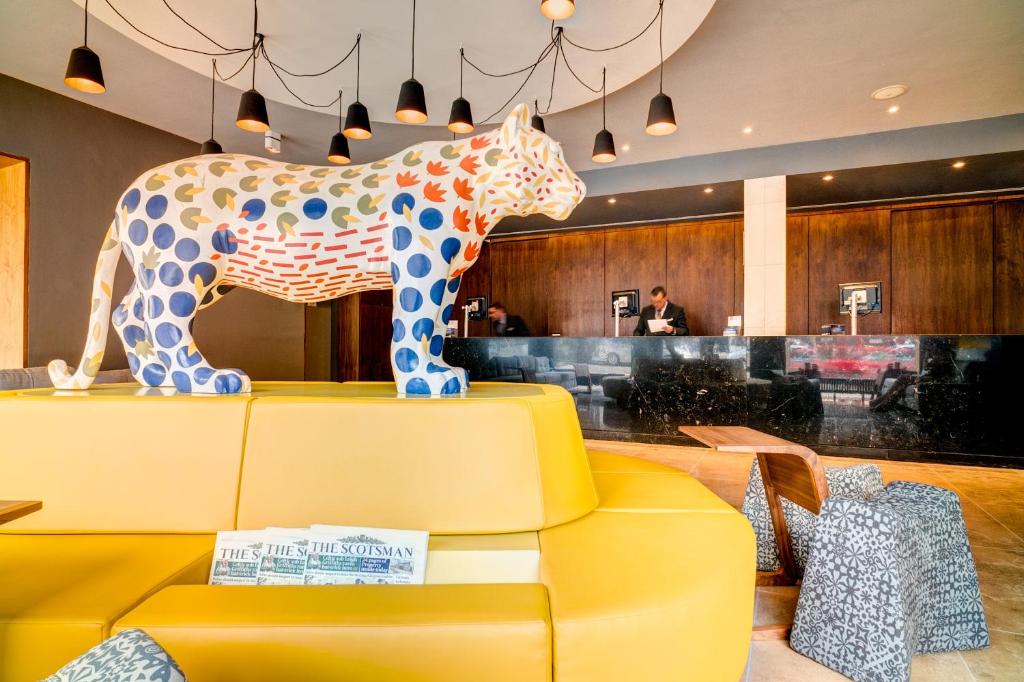

Oban, known as the “Gateway to the Isles,” welcomed us with its picturesque waterfront and stunning bay views. Our stay at the family-owned The Scot allowed us to experience the coastal vibes of Scotland. We explored the quaint town center, visited the historic McCaig’s Tower, and indulged in some of the region’s finest seafood.



Fort William, nestled amidst the breathtaking landscapes of the Scottish Highlands, provided a serene and awe-inspiring backdrop for our stay. Our stay at the family-owned Nevis Bank was based in the town center, which offered easy access to the renowned Ben Nevis mountain and train station. Hiking trails, majestic waterfalls, and the charm of Highland culture surrounded us during our time there.
Inverness, known as the Highlands capital, captured our hearts with its enchanting natural beauty and historic charm. Our accommodation at Radisson River Ness allowed us to explore the city center, stroll along the River Ness’s banks, and discover Loch Ness’s mysteries. Inverness provided a convenient base for exploring the countryside and visiting attractions like Urquhart Castle.

Transportation Around Scotland
During our sponsored trip to Scotland, we were fortunate to have reliable transportation options to explore the country’s stunning landscapes and vibrant cities. Additionally, we were accompanied by Alison, our knowledgeable and experienced Scotland tour guide, who made our journey even more enjoyable and insightful.
Scotland offers a well-connected transportation system, making getting around the country relatively easy. We had the opportunity to travel by various means, including:
Private Tour Guide
Alison, our trusted Scotland tour guide, played a vital role in navigating us through the country. With her in-depth knowledge of Scotland’s history, culture, and hidden gems, we gained valuable insights and had a personalized experience that enhanced our trip.
Trains
Scotland’s rail network is extensive and efficient, allowing us to travel comfortably between major cities and picturesque towns. The trains offered scenic views of the countryside and were a convenient mode of transportation for longer distances.
Buses
Scotland’s comprehensive bus network provides access to even the most remote areas. We took advantage of local bus services to explore smaller towns, villages, and rural areas, enjoying the scenic routes and the flexibility they provided.
Car Rental
Renting a car in Scotland is a popular option for travelers who prefer flexibility and independence. We had the opportunity to rent a car for certain parts of our journey, allowing us to explore off-the-beaten-path locations and venture into the countryside at our own pace.
Walkability
Many places, especially in cities like Edinburgh and Inverness, were easily navigable on foot. We enjoyed strolls through historic streets, along riverbanks, and in charming neighborhoods, immersing ourselves in the local ambiance.
Alison’s guidance and expertise in planning our itinerary and navigating Scotland’s transportation network were invaluable. Her local knowledge and recommendations ensured that we made the most of our time and experienced the best Scotland offers.
Traveling around Scotland was a seamless and enjoyable experience, thanks to the combination of convenient transportation options and Alison’s expertise. Whether by train, bus, rental car, or on foot, we could explore this beautiful country’s diverse landscapes, cultural treasures, and hidden gems.
Eating and Drinking In Scotland
Prepare yourself for a delightful culinary adventure when eating and drinking in Scotland. Scottish cuisine combines traditional dishes, fresh local produce, and a vibrant pub culture. During our trip to Scotland, we enjoyed the country’s rich culinary offerings and sampled some iconic Scottish delicacies.
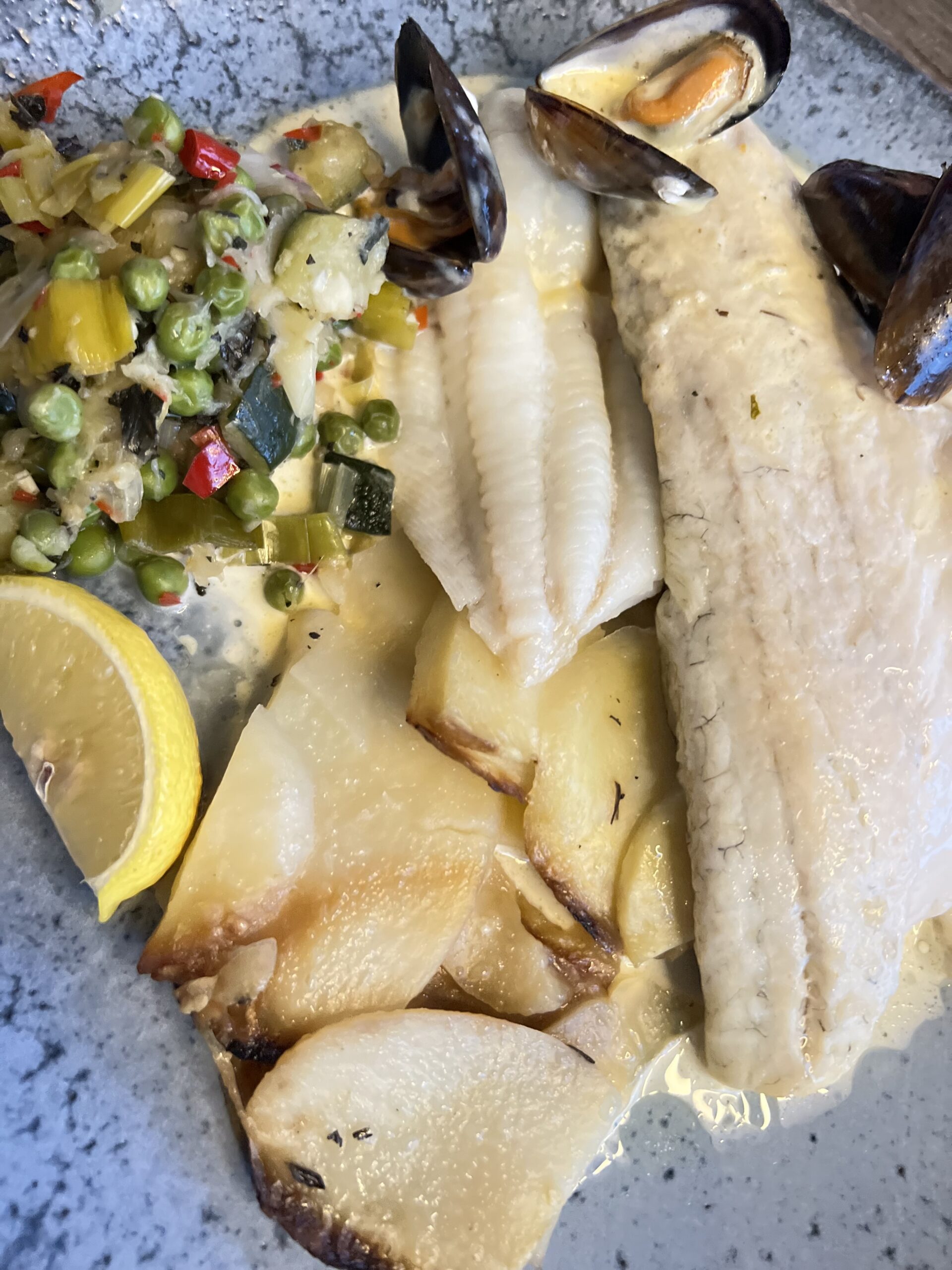
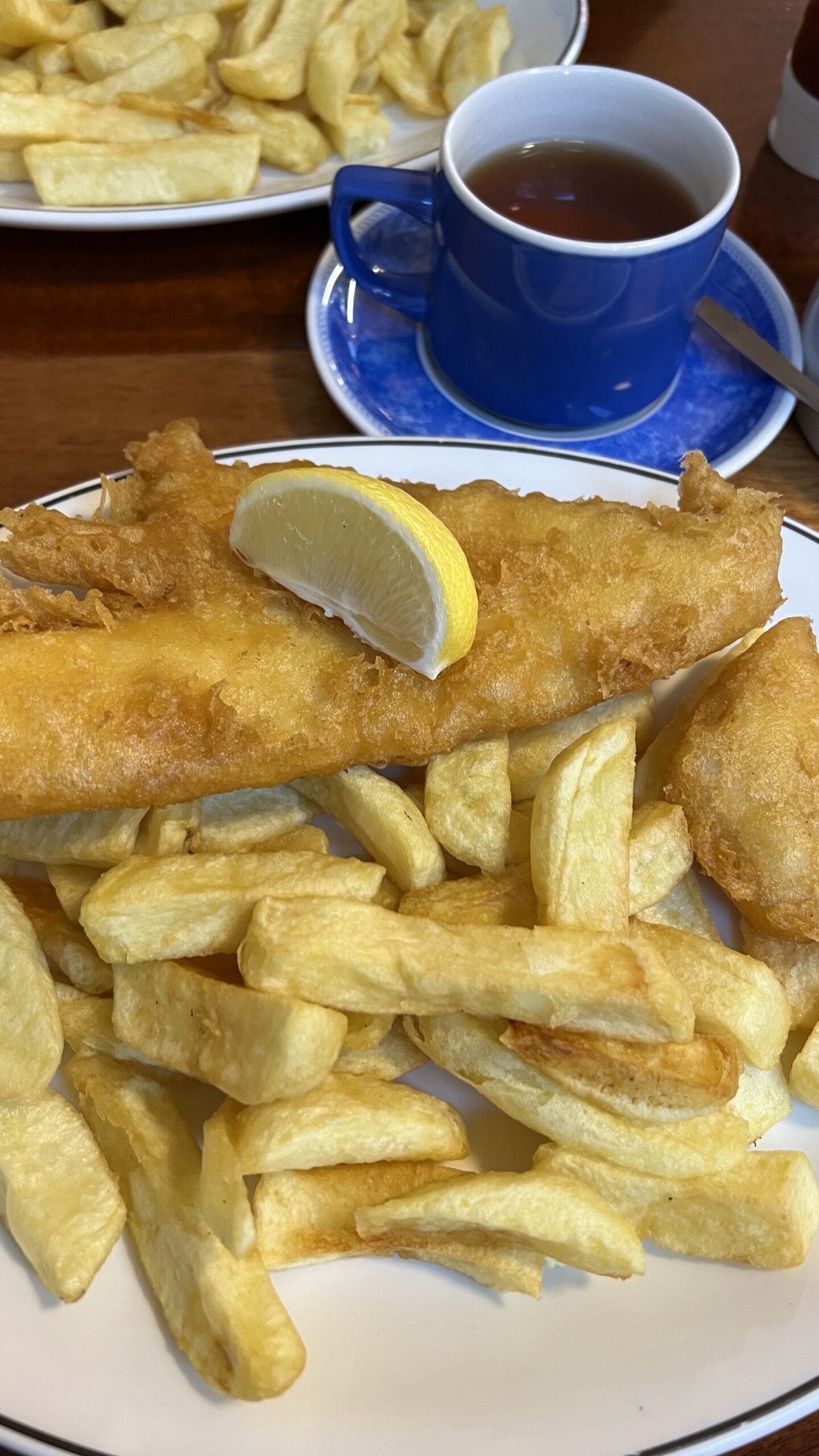

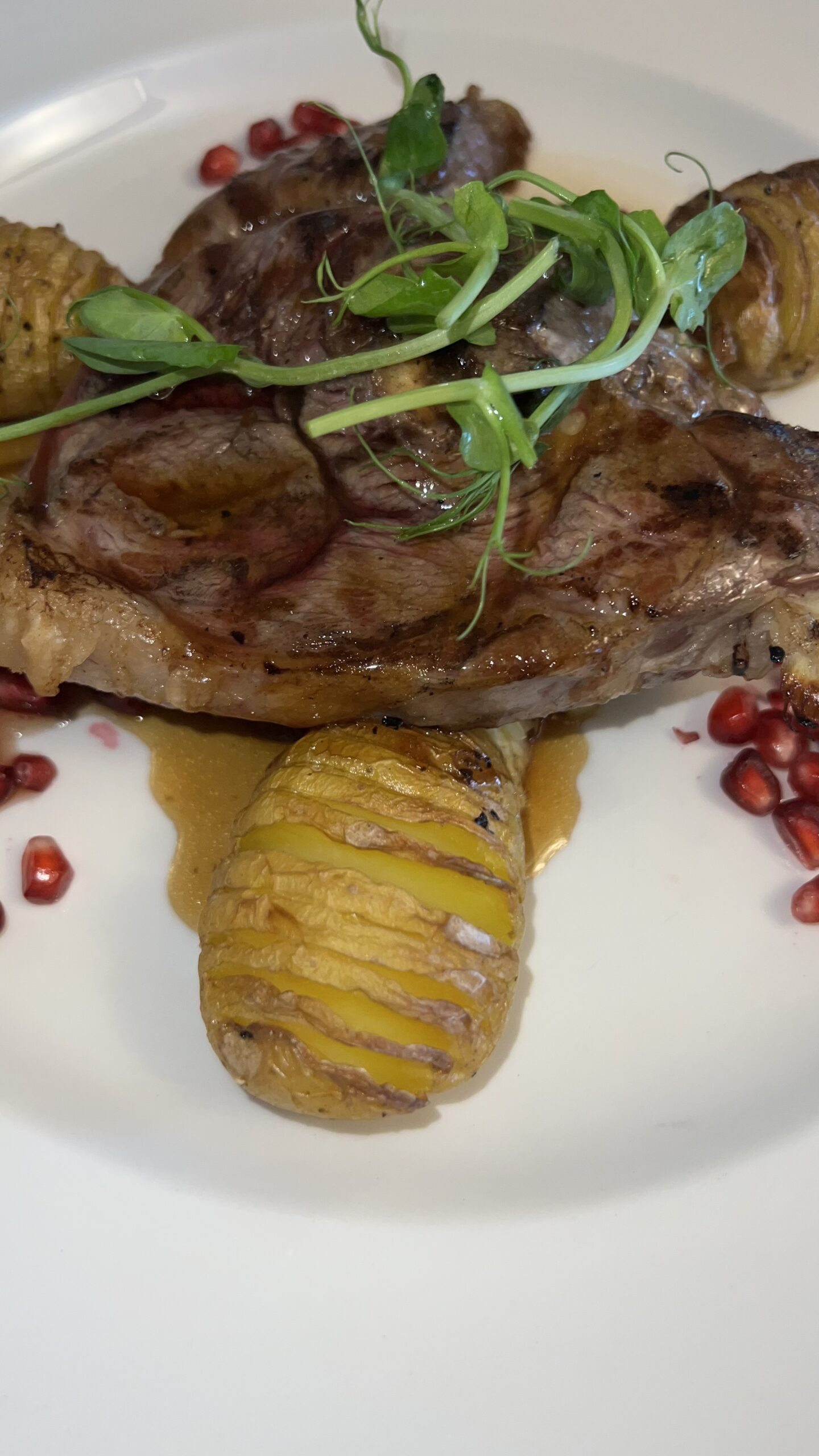





Traditional Scottish Cuisine
Scotland is famous for dishes like haggis, a savory pudding made with sheep’s offal, onions, and spices, traditionally served with neeps (turnips) and tatties (potatoes). We couldn’t resist trying this classic dish, which was surprisingly delicious! Other traditional dishes worth exploring include Scotch broth, Cullen skink (a creamy smoked haddock soup), and stovies (a hearty potato-based dish).
Seafood
Being surrounded by the Atlantic Ocean and the North Sea, Scotland is renowned for its exceptional seafood. From fresh salmon and haddock to succulent scallops and langoustines, we savored the finest seafood in coastal towns like Oban and Fort William. Don’t forget to try the famous Scottish smoked salmon, a true delicacy.
Whisky Tasting
Scotland is synonymous with whisky, and no trip to the country would be complete without sampling some of its world-famous spirits. We visited distilleries in different regions, including the Speyside and Islay regions, where we learned about the whisky-making process and had the chance to taste a variety of single malts and blends.
Pub Culture
Scotland has a vibrant pub scene that offers a cozy and convivial atmosphere to unwind and enjoy a pint of local beer or ale. We frequented traditional Scottish pubs where we tried local brews like Tennent’s Lager and Belhaven Best. Pubs also serve delicious pub grub, including hearty pies, fish and chips, and Scotch eggs.
Afternoon Tea
For a more refined experience, we indulged in the traditional Scottish afternoon tea. Served with a selection of sandwiches, scones, cakes, and a pot of tea, it was a delightful way to relax and enjoy the charming ambiance of tearooms in cities like Edinburgh and Inverness.
Farm-to-Table Dining
Scotland’s lush landscapes and fertile lands offer an abundance of fresh produce. We dined at farm-to-table restaurants that showcased seasonal ingredients sourced from local farms. From organic vegetables and fruits to tender meats and artisanal cheeses, we experienced the freshness and quality of Scottish produce.
Culinary Festivals
If you’re lucky enough to visit during one of Scotland’s culinary festivals, you’ll be treated to a gastronomic extravaganza. Events like the Edinburgh and Highland Food and Drink Festival showcase the best Scottish cuisine, featuring local producers, food stalls, cooking demonstrations, and tastings.
How I Traveled to Scotland
My journey to Scotland from Dulles Airport in Washington, DC/Virginia, with Turkish Airlines, was convenient and enjoyable despite the layover in Istanbul. Turkish Airlines provided excellent service and made the entire travel experience seamless.
After checking in at Dulles Airport, I boarded the Turkish Airlines flight bound for Istanbul. The flight was comfortable, with spacious seating and an attentive cabin crew. The airline offered in-flight entertainment options, including movies, TV shows, and music, which helped pass the time during the 10-hour flight.
Upon arrival in Istanbul, I had a layover of 3.5 hours before my connecting flight to Scotland. The layover was just the right length to stretch my legs, grab a bite to eat, and explore a bit of the airport. Istanbul Airport is modern and well-equipped, with numerous shops, restaurants, and amenities to keep passengers entertained and comfortable. I took advantage of the duty-free shopping and enjoyed a delicious meal at one of the airport’s restaurants.
Once it was time to board my second flight, the Turkish Airlines staff was helpful and efficient in guiding passengers to their respective gates. The flight from Istanbul to Edinburgh, Scotland, was relatively short, and I appreciated the comfortable seating and complimentary refreshments.
Traveling to Scotland with Turkish Airlines and experiencing a layover in Istanbul was a positive experience. The airline’s professionalism, excellent service, and modern facilities at Istanbul Airport made the journey smooth and enjoyable. I highly recommend Turkish Airlines to anyone planning a trip to Scotland or any other destination they serve.
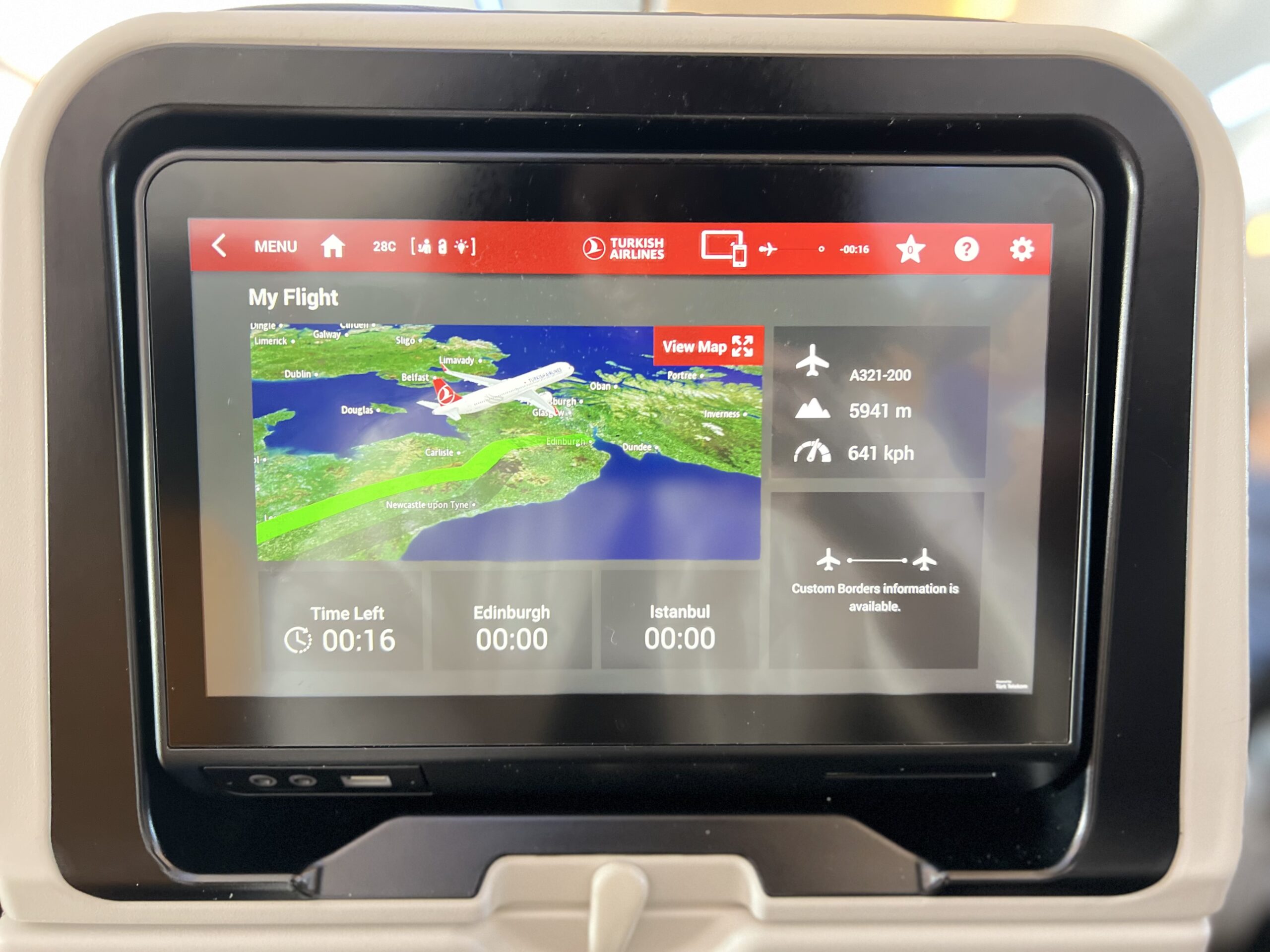


What To See And Do In Scotland?
Scotland offers a wealth of captivating sights and activities for travelers to explore. During our 8-day itinerary, we had the opportunity to immerse ourselves in the unique charm of each town we visited – Edinburgh, Oban, Fort Williams, and Inverness. Our days were jam-packed with exciting adventures and memorable experiences.
In Edinburgh, we were captivated by the city’s rich history and stunning architecture. We explored the iconic Edinburgh Castle, wandered along the historic Royal Mile, and visited the enchanting Holyrood Palace. The city’s vibrant atmosphere was palpable as we strolled through the bustling streets, indulging in delicious Scottish cuisine and browsing charming shops.
Next, we traveled to Oban, a picturesque coastal town called the “Gateway to the Isles.” We were greeted by breathtaking views of the sea and the town’s charming harbor and colorful waterfront.
During our visit to Oban, one of the highlights of our trip was taking a boat tour to explore the stunning nearby islands/isle. The crystal-clear waters and rugged coastlines immerse us in the region’s natural beauty and wildlife.
We embarked on a boat tour that allowed us to hop from one island to another, each offering its unique experience. One of two island hopping adventures was visiting Staffa, a small uninhabited island renowned for its unique geological formations, particularly the famous Fingal’s Cave. We approached the island, and the striking hexagonal basalt columns came into view, creating an otherworldly sight. We had the opportunity to explore the cave and witness the dramatic sound of waves crashing against the cliffs.
We were fortunate to visit an island home to an abundance of adorable and iconic puffins. This island, which we affectionately called the Lunga, aka “Puffin Isle,” was a true paradise for bird enthusiasts and nature lovers.
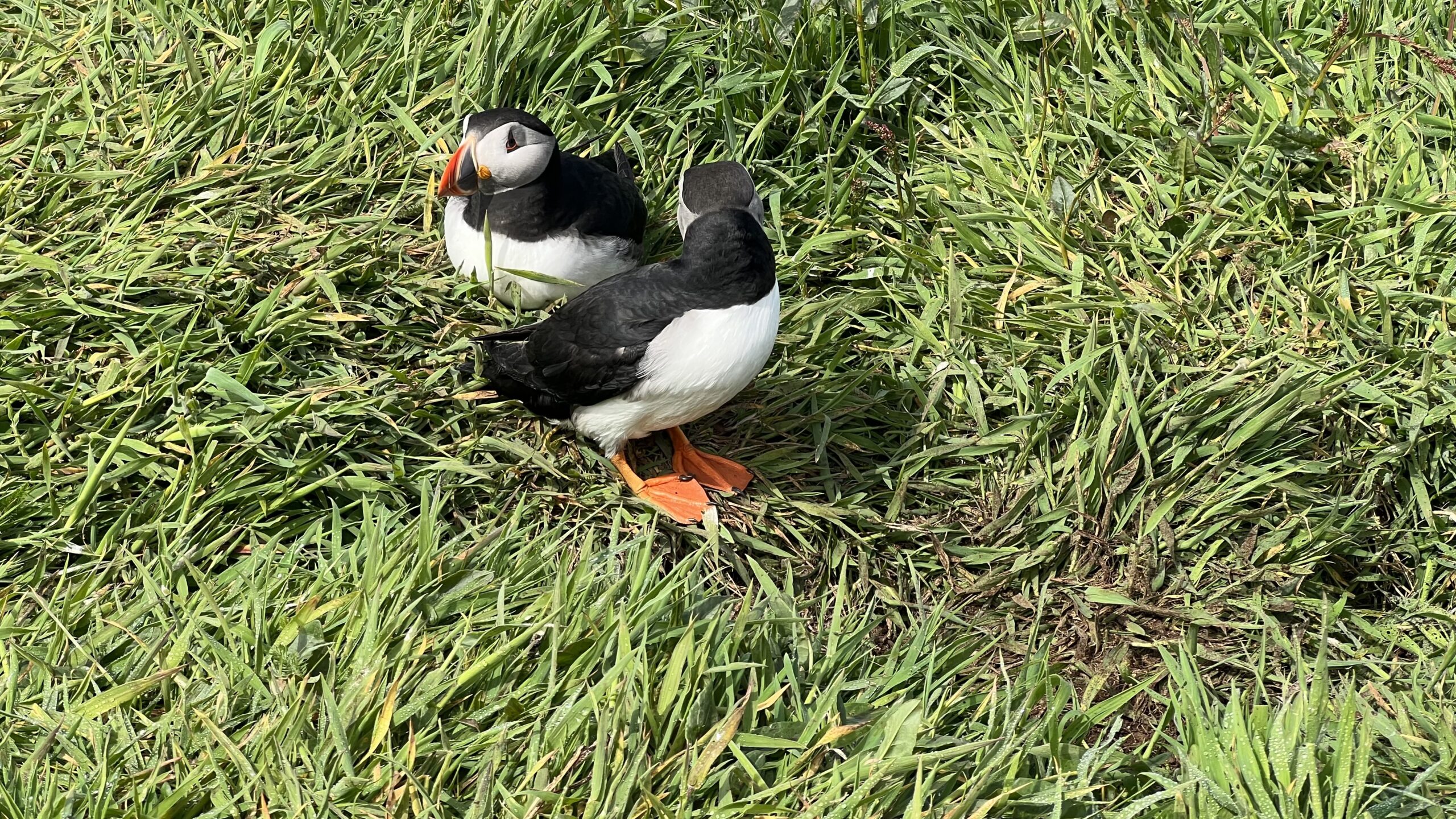
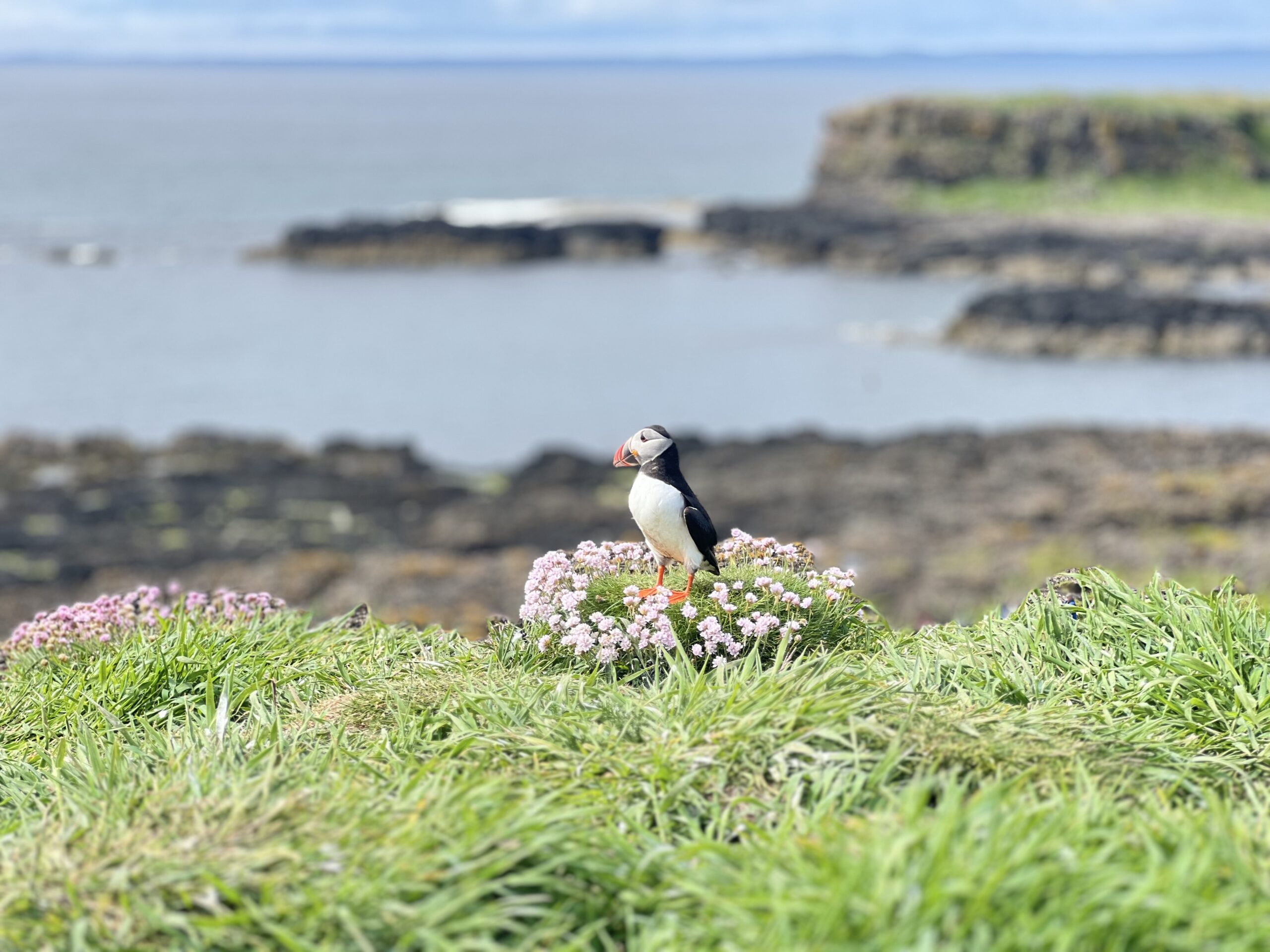
The boat tour allowed us to witness the raw beauty of Scotland’s islands and wildlife, providing a different perspective of the country’s coastal landscapes.
We ventured to Fort William from Oban, nestled in the magnificent Scottish Highlands. The town served as a gateway to some of Scotland’s most iconic natural wonders, including Ben Nevis, the highest mountain in the British Isles. For those seeking adventure, there were opportunities for hiking, mountain biking, kayaking, and even riding the Jacobite Steam Train, famous for its appearance in the Harry Potter films. One of my favorite things we did!
Our final destination was Inverness, the capital of the Highlands. Inverness offered a perfect blend of history, culture, and scenic beauty. We explored the banks of Loch Ness and hoped to catch a glimpse of the elusive Loch Ness Monster. The city was a delight to wander through, with its charming Old Town.
Throughout our trip, Alison, our trusted Scotland tour guide, provided invaluable insights and ensured that we made the most of our time in each location. From exploring historical sites to enjoying outdoor adventures and savoring the local cuisine, our 8-day itinerary truly allowed us to experience the best of Scotland.
Scotland truly offers something for everyone – whether you’re a history buff, nature enthusiast, or simply seeking to soak in the vibrant Scottish culture. From the bustling streets of Edinburgh to the tranquil beauty of the Highlands, Scotland is a destination that will leave you with lasting memories and a longing to return.
FAQs for Planning A Trip to Scotland
When is the best time to visit Scotland?
The best time to visit Scotland depends on personal preferences. Summer (June to August) offers longer daylight hours and milder weather, but it can also be crowded. Spring (April to May) and autumn (September to October) offer beautiful scenery and fewer crowds. Winter (November to March) can be cold but offers unique experiences like winter sports and festive events.
What are the visa requirements for visiting Scotland?
Visitors from many countries, including the US, Canada, Australia, and EU countries, do not need a visa for short visits to Scotland (up to 6 months). However, it’s essential to check visa requirements based on your nationality and the purpose of your visit.
How do I get to Scotland?
Scotland is accessible by air, sea, and land. Major international airports include Edinburgh Airport, Glasgow Airport, and Aberdeen Airport. There are also ferry services connecting Scotland to Northern Ireland, the Isle of Man, and mainland Europe.
What are the transportation options within Scotland?
Scotland has an extensive public transportation network, including trains, buses, and ferries. Renting a car is also a popular option for exploring remote areas. In cities like Edinburgh and Glasgow, there are also tram and subway systems.
What are the must-visit destinations in Scotland?
Scotland is known for its stunning landscapes, historic castles, and vibrant cities. Must-visit destinations include Edinburgh (for its historic sites and festivals), Glasgow (for its art and culture), the Scottish Highlands (for scenic beauty and outdoor activities), the Isle of Skye (for dramatic landscapes), and Loch Ness (for its mythical monster and beautiful surroundings).
What should I pack for a trip to Scotland?
Scotland’s weather can be unpredictable, so it’s essential to pack layers and waterproof clothing. Comfortable walking shoes are recommended for exploring cities and hiking trails. Don’t forget essentials like a universal adapter for electrical outlets and any necessary medications.
What is the currency in Scotland?
Scotland uses the British Pound Sterling (£). Most businesses accept major credit and debit cards, but it’s a good idea to carry some cash for smaller purchases and in remote areas.
Are there any cultural customs or etiquette I should be aware of?
Scots are generally friendly and welcoming people. It’s customary to greet people with a handshake or a nod of the head. When visiting someone’s home, it’s polite to bring a small gift. Tipping is not obligatory but is appreciated for good service.
What are the opening hours for shops and attractions in Scotland?
Opening hours vary depending on the location and the day of the week. In cities, shops typically open from around 9 am to 6 pm, with shorter hours on Sundays. Museums and attractions may have different opening hours, so it’s best to check in advance.
Is it safe to travel to Scotland?
Scotland is generally a safe destination for travelers. However, it’s always a good idea to take normal precautions, such as safeguarding your belongings and being aware of your surroundings, especially in crowded tourist areas.
Pin This ⤵
Leave a Reply
© copyright 2024 Congologie Studios